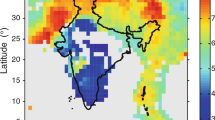
Overview
- Presents comprehensively all issues of earthquake geotechnical engineering
- Presents standard methods, theory and applications of geotechnical earthquake engineering useful for engineers, graduate students and professionals
Part of the book series: Springer Series in Geomechanics and Geoengineering (SSGG)
Access this book
Tax calculation will be finalised at checkout
Other ways to access
About this book
Similar content being viewed by others
Keywords
Table of contents (27 chapters)
-
Front Matter
-
PART 1 KNOWLEDGE OF SOIL MECHANICS
-
Front Matter
-
-
PART 2 PROBLEMS CONCERNING SHAKING OF SOFT GROUND UNDERGOING EARTHQUAKE LOADING
-
Front Matter
-
-
PART 3 LIQUEFACTION
-
Front Matter
-
Reviews
From the reviews:
"This book … is an encyclopedic assemblage of basic and practical science on state-of-the-art engineering technology dealing with the behavior of earth materials subject to earthquakes and derivative effects. … Hundreds of graphs, charts, and mathematical relationships are skillfully integrated with the text and photographs. This volume is truly monumental. It should be in the libraries of all geotechnical engineers and engineering geologists. Summing Up: Highly recommended. Upper-division undergraduate through professional collections." (T. L. T. Grose, Choice, Vol. 46 (2), October, 2008)
Authors and Affiliations
Accessibility Information
Bibliographic Information
Book Title: Geotechnical Earthquake Engineering
Authors: Ikuo Towhata
Series Title: Springer Series in Geomechanics and Geoengineering
DOI: https://doi.org/10.1007/978-3-540-35783-4
Publisher: Springer Berlin, Heidelberg
eBook Packages: Engineering, Engineering (R0)
Copyright Information: Springer-Verlag Berlin Heidelberg 2008
Hardcover ISBN: 978-3-540-35782-7Published: 25 February 2008
Softcover ISBN: 978-3-642-07145-4Published: 18 December 2010
eBook ISBN: 978-3-540-35783-4Published: 19 December 2008
Series ISSN: 1866-8755
Series E-ISSN: 1866-8763
Edition Number: 1
Number of Pages: XX, 684
Topics: Geoengineering, Foundations, Hydraulics, Geology, Geotechnical Engineering & Applied Earth Sciences, Solid Mechanics, Solid Mechanics, Civil Engineering



